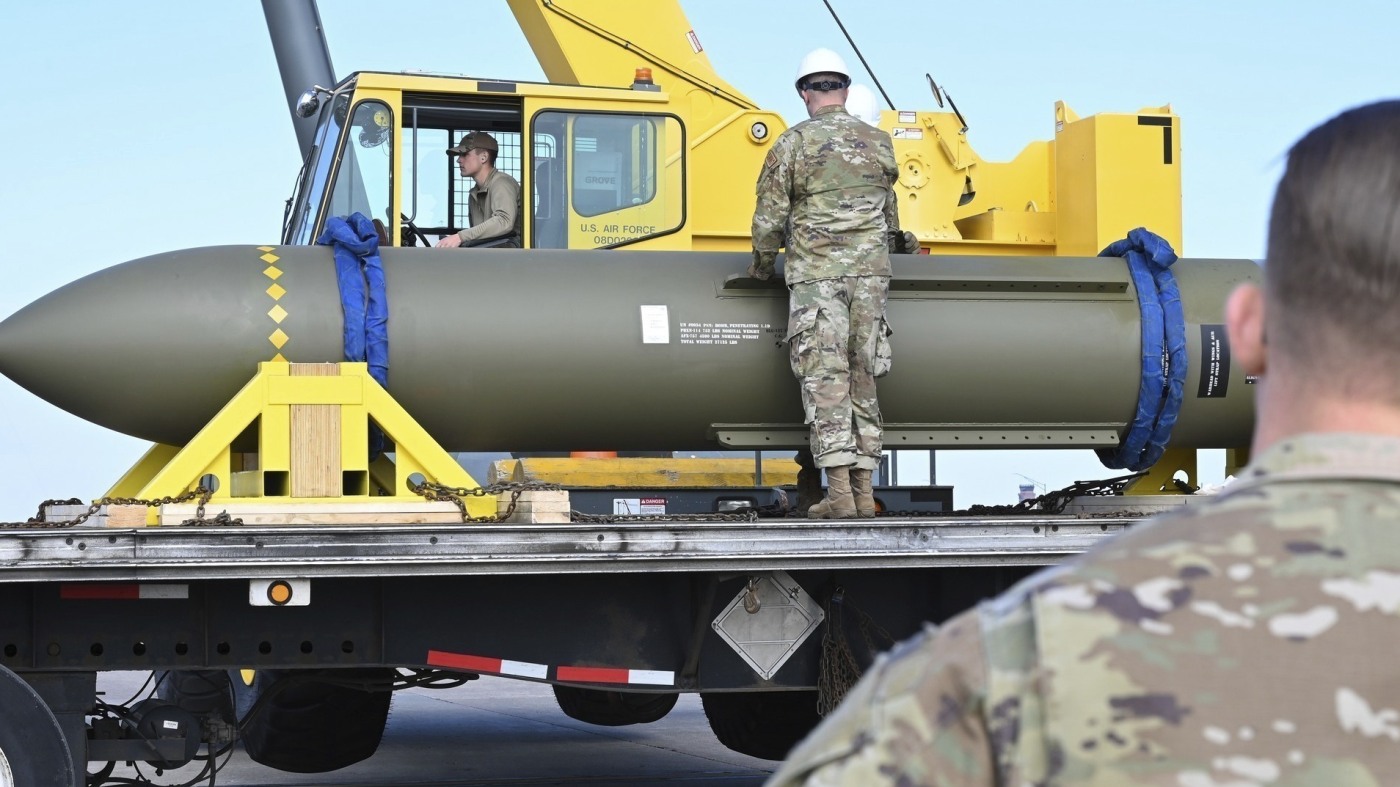The Potential Use of U.S. “Bunker Buster” Bombs Against Iran
The Geopolitical Context
The simmering tensions between Israel and Iran, amplified by concerns over Iran’s nuclear ambitions, have thrust the possibility of military intervention into the spotlight. At the heart of these discussions lies the U.S.’s unique capability to deploy massive “bunker buster” bombs, specifically the GBU-57, against Iran’s fortified nuclear facilities. The Fordo facility, nestled within a mountain, epitomizes the challenge posed by deeply buried nuclear sites. Traditional bombs lack the penetration power to effectively damage such targets, making the GBU-57 a critical component in strategic planning.
The GBU-57: A Technical Marvel
The GBU-57 Massive Ordnance Penetrator (MOP) is engineered to penetrate hardened structures and reach targets buried deep underground. Weighing in at 30,000 pounds, its dense steel alloy casing allows it to withstand the forces of impact and continue its descent. Reports suggest it can penetrate up to 200 feet of earth and rock before detonating, placing it within range of the centrifuges believed to be housed within the Fordo facility. However, the effectiveness of the GBU-57 is not absolute. Factors such as the geological composition of the mountain, the facility’s internal layout, and the bomb’s point of impact can all influence its success. Additionally, the U.S. arsenal includes smaller yet potent “bunker busters” like the BLU-109 and GBU-28 series, offering flexibility depending on the specific target and desired outcome.
Logistical Challenges and Political Implications
The deployment of the GBU-57 is intrinsically linked to the B-2 Spirit stealth bomber. This aircraft is crucial for its ability to evade radar detection and its payload capacity, which can theoretically carry two GBU-57s. However, the long-range flight required to reach Iran from potential U.S. bases presents significant logistical challenges. The mission would necessitate extensive aerial refueling, increasing the risk of detection and interception. Moreover, the decision to deploy the B-2 carries substantial political weight, signaling a clear escalation of U.S. involvement. The potential for a direct U.S. strike, even with a “bunker buster,” is described as carrying “a lot of political baggage,” highlighting the complex interplay between military strategy and political considerations.
The Fordo Facility: A Critical Target
The Fordo Fuel Enrichment Plant is the primary focus of this discussion. Its location deep within a mountain provides substantial protection against conventional attacks. The facility is believed to house a significant portion of Iran’s uranium enrichment program, making it a critical target for those seeking to prevent Iran from developing nuclear weapons. However, even a successful strike against Fordo wouldn’t necessarily eliminate Iran’s nuclear capabilities entirely. Iran has other nuclear sites, some of which are less well-protected but more dispersed. Furthermore, the destruction of Fordo could trigger a retaliatory response from Iran, potentially escalating the conflict and destabilizing the region.
Broader Ramifications and Regional Impact
The use of a “bunker buster” bomb against Iran would have far-reaching consequences. Beyond the immediate military impact, it would likely trigger a cascade of events with unpredictable outcomes. A U.S. strike could provoke a direct Iranian response, potentially targeting U.S. assets in the region, including military bases and naval vessels. The conflict could spill over into neighboring countries, drawing in other regional actors and exacerbating existing tensions. The Persian Gulf is a critical artery for global oil supplies, and a conflict in the region could disrupt oil flows, leading to a sharp increase in prices and potentially triggering a global economic downturn. Politically, the decision to use force would likely face international condemnation and could damage the U.S.’s standing in the world.
A Calculated Risk with Uncertain Outcomes
The potential deployment of a U.S. “bunker buster” bomb against Iran represents a high-stakes gamble. While the GBU-57 offers a unique capability to penetrate deeply buried targets like Fordo, its effectiveness is not guaranteed, and the broader ramifications of its use are potentially catastrophic. The decision rests on a complex calculation of risks and benefits, weighing the potential to delay or disrupt Iran’s nuclear program against the likelihood of escalating a regional conflict with unpredictable and potentially devastating consequences. The situation demands careful consideration, strategic foresight, and a clear understanding of the multifaceted challenges involved.
Conclusion: Navigating the Complexities
In conclusion, the use of U.S. “bunker buster” bombs against Iran is a multifaceted issue that transcends military strategy. It involves a delicate balance of political, economic, and diplomatic considerations. The GBU-57, while a formidable weapon, is not a panacea. Its deployment would entail significant risks, including escalation, regional instability, and potential global economic disruption. As such, any decision to use this weapon must be made with a deep understanding of the broader implications and a commitment to exploring all possible diplomatic avenues. The path forward requires a nuanced approach, one that acknowledges the complexities of the situation and seeks to mitigate the risks while pursuing strategic objectives. The world watches, hoping for a resolution that avoids unnecessary conflict and promotes stability and security.











